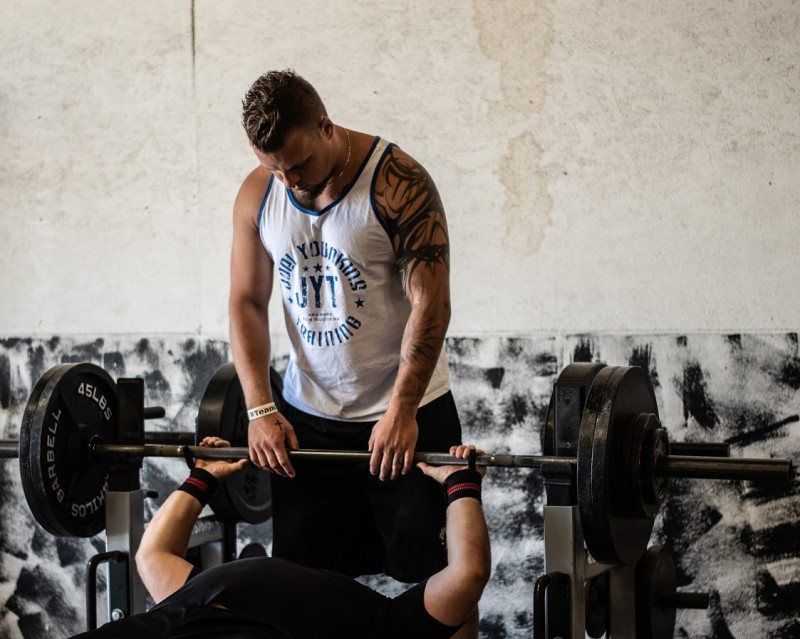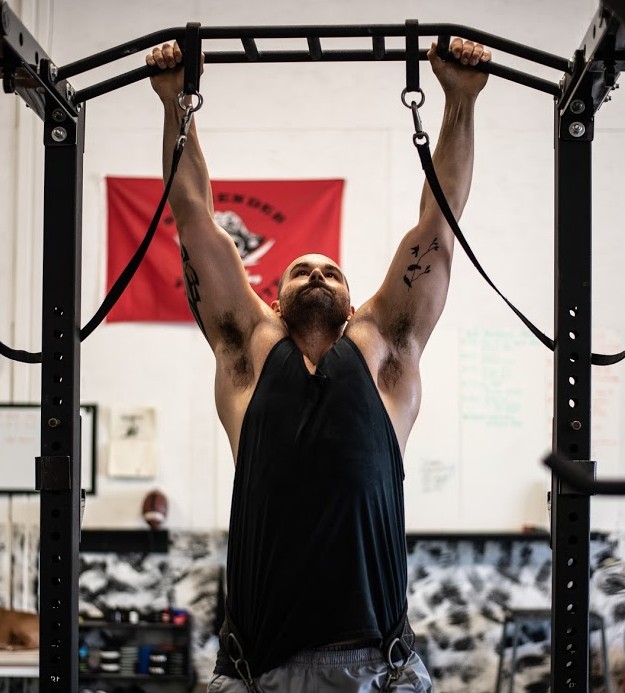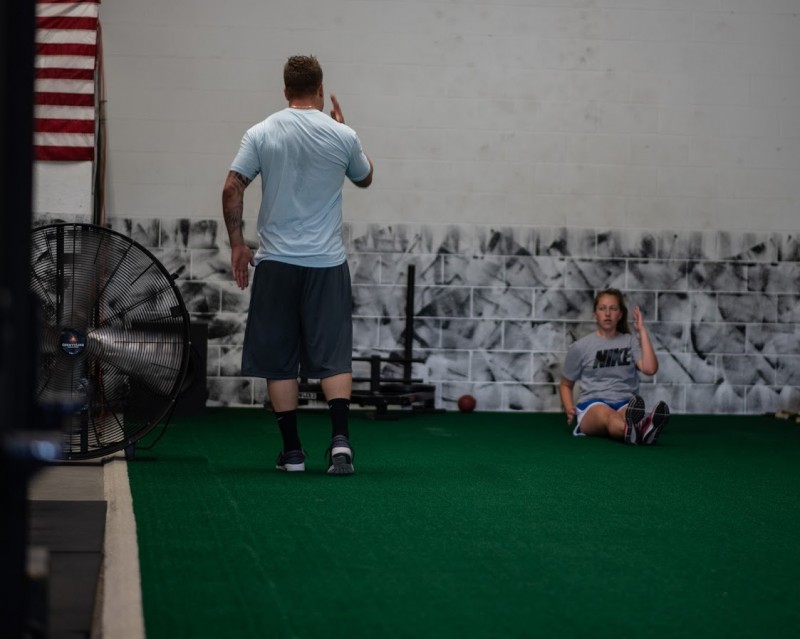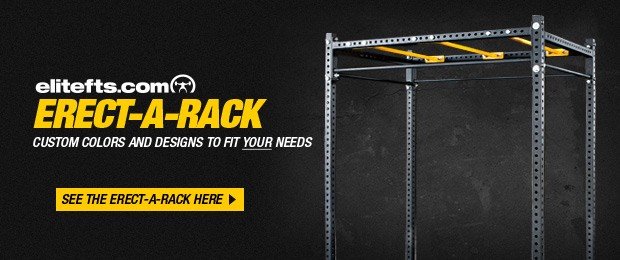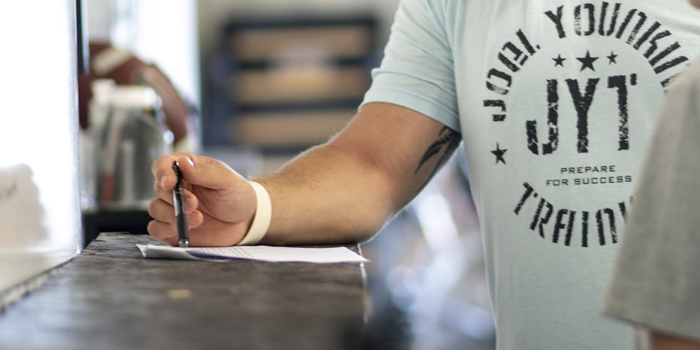
At my training facility, we see a variety of individuals on a daily basis. Although our clients range from athletes to fitness enthusiasts, we like to take a core coaching approach by following certain principles when coaching them. They have access to sport performance, general strength and conditioning, and powerlifting style programs. We can scale their workouts to give them the right doses of what they need for their particular training goals and expectations. We fit the training and coaching principles to our clients.
RECENT: The Training Arriving Model
In this article, whether you are a coach or a lifter, I’m going to share three insights into our training approach for all of our clients. Because our facility can be diverse member wise, we have had to establish a firm methodology for how we coach our clients. This article isn’t intended to give you some groundbreaking information. This is simply to share what we are doing and what we are finding success with. Our success with this approach has been demonstrated by our consistent growth year after year in our membership, as well as the wide range of people we are able to help and train.
So, here are three things we try to accomplish and give to every client who trains at JYT so that all clients can get the most out of their training.
Give Simple Coaching Cues
When I was a young intern strength coach at Youngstown State University, another student coach at the time, Reuben Green, told me, “Coaching is like teaching math, you have to teach them addition and subtracting before they can learn multiplication.” That’s always been something that’s stuck with me and I’ve shared with my interns as I’ve continued throughout my years of coaching.
For most people entering our facility, we assume they are not experts. Chances are that this is all new to them, especially the idea of hiring a coach to observe their movements and coach them on how to train properly. We try to give only 2-3 coaching cues per movement at the most when they are performing something new because we realize that coaching cues may be a new concept for most clients. Even though a coach can probably rip off 20 cues to teach a squat, we focus on giving them no more than three to start off with. For example, we will most likely start off with hinging at the hips, opening the knees, and giving them a depth command. I’ve found that the fewer cues, the better when you’re trying to get the most out of your clients. We stick to three cues max based on applied behavioral analysis research and the evidence that research provides regarding giving simple three-step commands to someone learning something new.
As time goes on, we add in more coaching cues when they’re ready to handle them. At that point in time, we still focus on only one to three coaching cues while they’re performing the lifts. So, maybe now that they have the basics down, we will add in bracing, driving through the bar, and weight distribution in their feet. We have found success in this methodology, evidenced by novice lifters being able to successfully respond to the cues and build upon them, thus being able to execute proper form with their lifting techniques in short periods of time.
We believe in helping our clients to be confident in themselves and with their workouts. When they begin to overthink, you will never get from them what you need. And more importantly, they will not get what they need most from you. We realize that even if we’re trying to provide as few cues as possible, these cues need to be precise and meaningful to be effective. We keep it simple but effective and meaningful for them so they can attack their workouts with clarity and confidence. We’ve found that this really helps them at improving their technical skills not just within the first few weeks but over a long period of time as we slowly introduce more and more coaching cues for them to work at. We want them to work, not think.
Perform Only the Basics
Just as with our coaching cues, we perform only the basics in the gym. Why? Well, because they work every time. I’ve learned the hard way that training correctly is sometimes hard enough and that your clients are probably never bored if you continually challenge them. If they sound bored, they’re probably more curious about the exercises they see others performing than they are bored with their current training. Don’t fall into the trap of thinking that your clients need to be entertained.
At JYT, every client does some sort of squat, press, pull, row, and abdominal work. And, of course, we add in the appropriate accessory exercises and conditioning methods that are needed. But the goal is to perform only basic movements. I almost want the workout to look boring from an outside perspective. It looks boring because nothing flashy is happening, and we rarely ever max out our clients. This allows us to provide an injury-free training environment.
This will again allow our clients to actually become good and efficient at their training. We don’t care about entertaining them. Our clients will come back to the gym and tell us crazy things they see on Instagram, but we don’t allow that to influence us in our decision-making for them. As I said before, the younger version of myself would have struggled with this dilemma, but not anymore. The best clients are winners—it’s in their DNA—and they simply like to make progress no matter what it is that they have to do.
Because our clients are typically individuals who are new to training or are young (5 years or less), we focus on the idea of efficiency and skill when it comes to exercise selection for them. We allow each movement to run its course until we need to change exercises. We have about 4-6 variations for the main lifts that we like to incorporate at the right times with the right individuals, but we don’t worry about weekly variation and rotating these exercises. We simply allow for steady adaption and a high frequency of technical skill to happen over a period of time. Accessory movements have a much higher rate of monthly variation due to the shortened ceiling of progression that can be made with them. Our goal for our clients is simple: to allow for the laser focus they need to become good at training. My goal is to take a beginner and in six to twelve months have him or her looking as though he or she grew up in a gym. If you walk into JYT at any point in time, you will see evidence of this just by taking a look at the individuals who are training there.
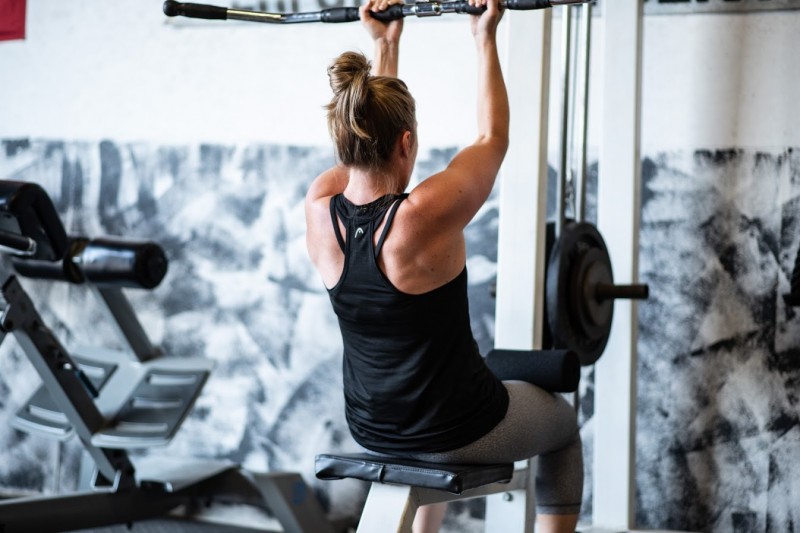
Make Them Leave Feeling Accomplished, Not Destroyed
I’ve learned that a lot of people like to talk a big game about being sore from training. As a former D1 football player, I’ve experienced how sore you can actually become from training—like the type of sore that makes you feel crippled. Perhaps you can relate to what I’m talking about. But I’ve learned that this type of sore isn’t what people actually want or need. They just want some delayed onset muscle soreness (DOMS) to give them feedback regarding their efforts. This allows an individual to feel a sense of achievement but not experience so much fatigue and soreness that it deters him or her, mentally or behaviorally, from wanting to stick to his or her training. As a coach, you have the power to either train individuals or absolutely crush their souls on any given session. I come from the side of the fence of training clients to achieve results, not just of hurting feelings and leaving them dreading the concept of training.
Oftentimes our clients will come in from a long day of work and give us the “be lucky I’m here face.” But so many of these same days, they leave their sessions with smiles on their faces. Our clients work, but we don’t beat them up. I want them leaving feeling accomplished and euphoric. Every once in a while, they’ll leave trashed (maybe due to poor outside recovery/nutrition/rest/etc.), but that’s never the intended goal of our workouts. We intend for them to have one to three left in the tank per set. In this way, they are smashing their workouts instead of getting smashed. We know this is working based on the low turnover rate of clients compared with the high retention rate. JYT has steadily experienced a 100% growth rate in membership every year.
RELATED: Shit Coaches Need to Stop Telling Their Clients
They are always put in a constant state of winning in their training. And this is what we want at JYT. Our goal is to get them good at their training and not failing at their reps. Again, don’t get me wrong—we work and push our clients (you can ask them yourself). We take them to their edges, but we don’t go screaming past them, either. We want to slowly adapt them so that they keep making progress for a very long time. Therefore, we use a linear progression model to load and progress their training. We either simply add small amounts of volume or add small amounts of intensity each week and allow this to accumulate over time. We also deload every four weeks. I usually don’t look at this as a true deload but rather as more of a stabilizing week, where we allow their bodies to adapt to their new training progress.
Because we know that training doesn’t happen in a perfect world, we allow for room to make daily adjustments when needed. If they’re feeling great and destroying the weights on a particular day, we usually let them work up a little heavier as long as it looks good. If it’s not their day, we have no problem not increasing weight, or decreasing some volume for them. An important part of our job as coaches is managing their stress. We can usually tell where they’re at for the day by the way they enter the facility and watching their warm-up sets.
Anyone can go hard in the paint for a couple of months, but we want our clients to look at the gym with a longer-range vision and not just a short-term solution. We try to instill our training philosophy in our clients to promote training and fitness as a lifestyle.
Because we look at training with a long-term approach and as a lifestyle, I believe that this has truly helped us to grow our business, as it has helped our retention rate tremendously. More than 70% of our current clientele has been training with us for at least more than a year now, some even years. Our clients can train hard today but still are able to train hard the rest of the week, and they have come to appreciate this along with their training results. Since opening in 2013, we have increased our clientele by more than five times what we started with. Again, I truly believe that if we just worked all of our clients to death to try to become the most “hardcore gym” in the area, we would not have been able to actually help the people we have.
Conclusion
By now, you probably sense that we simply take the approach of allowing our clients to come in and put in the work with as little anxiety as possible. We want our clients relaxed but able to focus confidently on their work. Therefore, we don’t overwhelm them with a million cues or extremely advanced exercises, and we don’t destroy them to the point that they can’t walk for a couple of days after every squat workout. Instead, we provide them with opportunities to grow. We don’t want them overthinking their exercises. We also don’t want to give them workouts to entertain them, and we don’t want to make them hate and dread their training. I strongly feel that this is what has helped us to gain new clients in addition to helping our retention rate tremendously. This is because our clients know they will keep progressing from hard training that will not wreck their lives outside of the gym after every session. This is about changing people’s lives in and outside of the gym, and I feel that as a coach, other than safety, that’s our main responsibility to them.
Joel Younkins has been involved with training since he began junior high training for sports. He played football for Youngstown State University (YSU) and graduated with a degree in exercise science. He was a strength and conditioning intern for YSU Olympic Sports teams before starting his own facility. He is now the owner of and a physical preparation coach at Joel Younkins Training located in Youngstown, Ohio. He trains athletes from junior high up to pros, powerlifters, and the general population.










